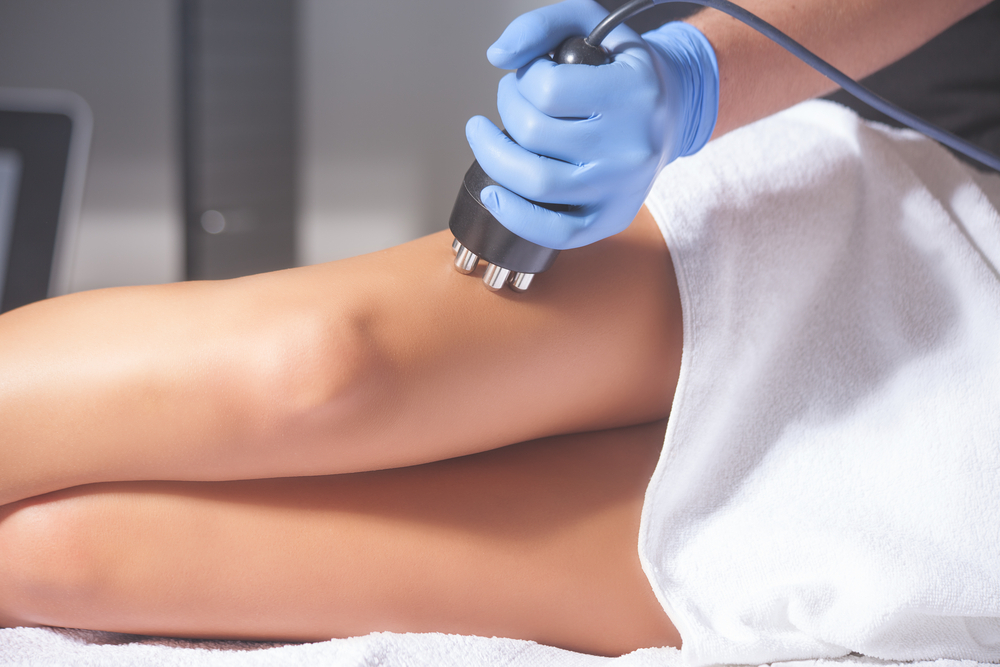No cellulite treatment has made the dents disappear permanently – so far. We keep hearing about new treatment methods. But do they really work?
Cellulite treatment: What’s new?
Again and again, new methods are being tested to strengthen our connective tissue and finally put an end to our orange peel skin. Whether classics such as body wrapping, lymph drainage, cryolipolysis and hypoxi trainer, or home remedies – in our article on cellulite we explain all the methods that are allowed in the fight against cellulite.
But what else can you do? What new things has research brought? Mostly, it is about minimally invasive methods that are intended to improve the physiological structure of our connective tissue. External treatments such as creams or a cellulite massage have so far produced only minor and temporary results. Which cellulite treatment comes into question depends on the severity of the dents – but also on whether dermatological procedures are actually an option for us. We present a few procedures.
What is carboxytherapy?
Carbon dioxide is injected under the skin with wafer-thin needles. This increases microcirculation and improves the skin’s elasticity and density. It also increases the collagen content. The fat breakdown is to be promoted and the lymphatic circulation improved.
The process can only be used if all health requirements are met, but it is touted as being gentle and inexpensive.
How does subcision work?
The dermatologist punctures a fine cannula or wire through the skin and loosens the connective tissue strands with careful movements. This makes the skin appearance smoother. In cases of very pronounced cellulite with deep dents, this cellulite treatment can soften the dents. However, long-term studies are still pending.
What is Cellfina?
This newly developed procedure works similarly to subcision, but is gentler: under local anesthesia, the skin areas are lifted by a vacuum, then the connective tissue strands are cut with a needle-shaped scalpel. A treatment method with long-term effects: Even three years after Cellfina, an improvement should still be visible.
How does CCH (Clostridium histolyticum collagenase) work?
The third variant based on the principle of subcision is currently still being tested: Here, the connective tissue strands are not severed, but softened with the aid of an enzyme (Clostridium histolyticum collagenase), which is injected under the skin. There are no long-term studies yet. In the mesotherapy procedure, vitamins and trace elements can also be injected into the skin to add to the fat cells.
Shock waves plus strength training
The Hanover Medical School (MHH) has developed a novel cellulite treatment: a mixture of focused shock wave therapy and special strength training for the buttocks and thighs. In the study, the participants had to complete six 20-minute treatments at weekly intervals and daily training of special exercises. This combination of treatments improved cellulite by an average of 30 percent.
Is Endermologie the new cellulite treatment?
Endermologie is a strongly vibrating deep massage that reaches far into the lower connective tissue and is performed with a special massage device by a trained massage therapist. A vacuum draws the skin areas upwards, which are then intensively massaged by two rollers. This lipomassage stimulates the lymph flow and blood circulation. However, like many massage procedures, this treatment is only temporarily successful. If the deep massage is discontinued, the positive effect on the connective tissue is also lost.
Liposuction for cellulite?
There are significant risks associated with this surgical procedure. In addition, liposuction does not automatically solve our cellulite problem. Because fat cells can form anew at any time. There is also the risk that the dents may become even more prominent after liposuction: If the fat is not sucked off deep enough, the deeper fat cells can slide up – and are more clearly visible than before. Most aesthetic surgeons do not recommend this cellulite treatment.

